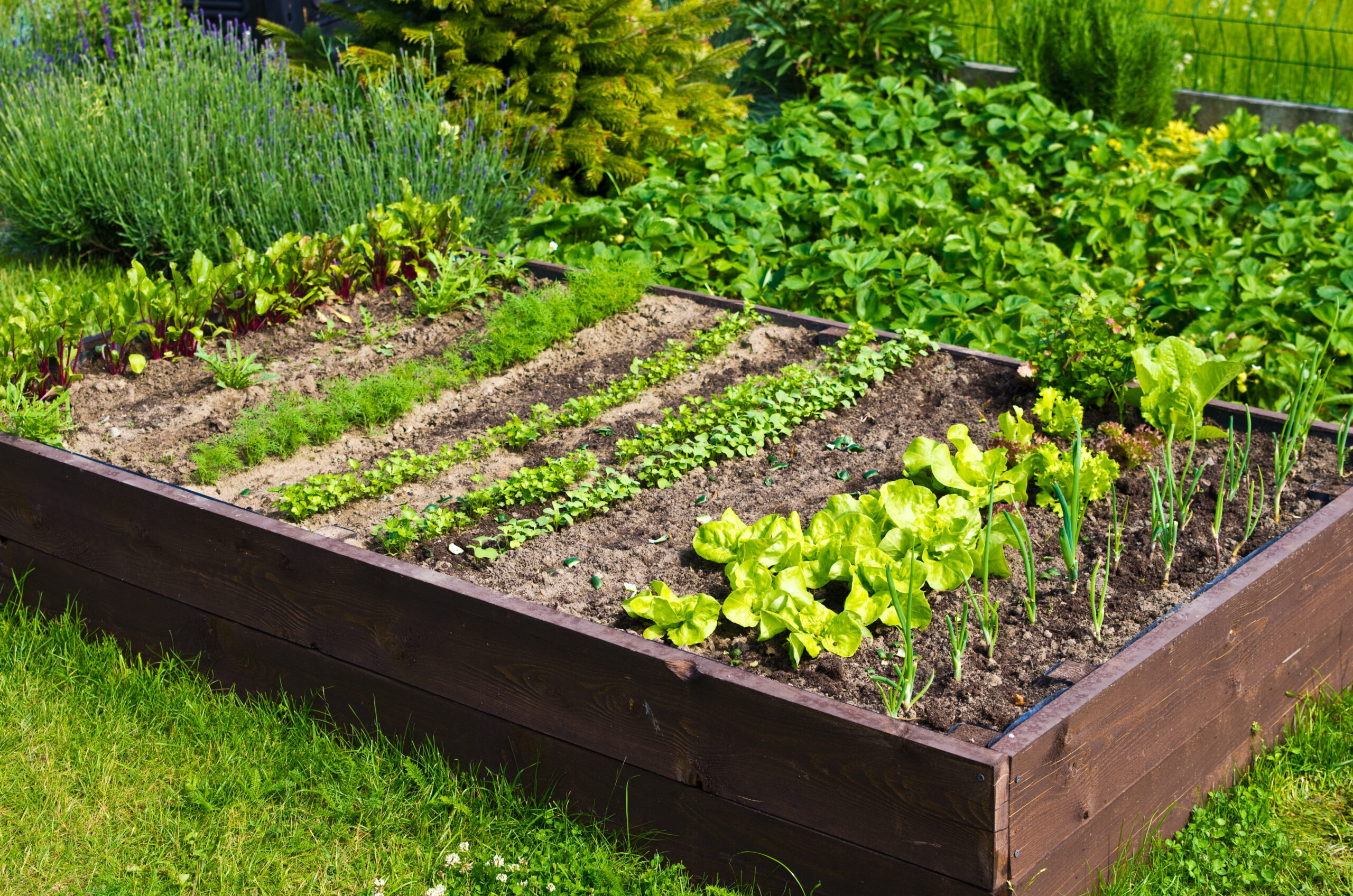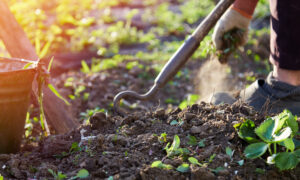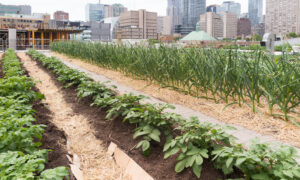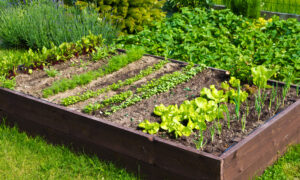In recent years, we’ve witnessed a remarkable resurgence in the art and science of home gardening. This renewed interest transcends mere hobby; it represents a profound shift towards sustainability, health, and a deeper connection with the earth beneath our feet. But what exactly has sparked this green revolution? Let’s explore the myriad benefits of home gardening that are drawing more people to their backyards and balconies with a trowel in hand.
A. The Revival of Gardening:
- Historical Perspective: Once a necessity during times of scarcity, gardening waned in the era of commercial agriculture and convenience. However, we’re now seeing a renaissance driven by a collective yearning for authenticity and self-sufficiency.
- Modern-Day Catalysts: Factors like the global pandemic have played a significant role, urging people to reconsider their lifestyles. Coupled with growing awareness about food sources and a surge in health consciousness, these elements have merged into a powerful impetus for home gardening.
B. Health Benefits:
- Nutritional Richness: Home-grown produce isn’t just fresh; it’s often more nutrient-dense than store-bought counterparts. The immediacy from garden to table ensures minimal nutrient loss, offering a treasure trove of vitamins and minerals.
- Mental Health and Well-being: Gardening isn’t just about the body; it’s a balm for the mind. The process of planting, nurturing, and watching something grow is profoundly therapeutic, reducing stress and promoting a sense of accomplishment.
- Physical Exercise: Tending to a garden is a surprisingly effective form of physical activity. It blends elements of strength, flexibility, and endurance, making it a holistic exercise regime that’s gentle yet effective.
C. Environmental Impact:
- Reducing Carbon Footprint: By growing food locally, we significantly cut down the carbon emissions associated with transporting produce over long distances.
- Promoting Biodiversity: Home gardens can become havens for various flora and fauna that contribute to ecological balance and encourage pollinators like bees and butterflies.
- Sustainable Practices: Gardening encourages sustainable practices like composting and organic pest control, which have far-reaching benefits for the environment.
D. Personal Satisfaction and Community Connection:
- The Joy of Creation: There’s an undeniable joy in eating a tomato you’ve grown yourself or sharing your harvest with neighbors. It’s a deeply personal and gratifying experience.
- Educational Value: Gardening is a continuous learning process about nature, science, and patience. It’s an invaluable educational experience for individuals of all ages.
- Fostering Community: Whether it’s through sharing tips with fellow gardeners online or participating in community gardens, gardening nurtures a sense of community and shared purpose.
In essence, the growing trend of home gardening isn’t just about planting seeds and harvesting produce. It’s a holistic journey that nourishes the body, calms the mind, heals the environment, and connects us with others. As we move deeper into this series, we’ll explore each of these aspects in detail, guiding you on how to cultivate not just a garden but a healthier, more sustainable, and more fulfilling way of life.
In This Article
Choosing the Right Location – The Foundation of a Flourishing Garden
Selecting the ideal location for your garden is akin to laying the foundation for a house. It’s a critical decision that influences the success and sustainability of your gardening endeavors. During this chapter, we will discuss key elements to consider while selecting an ideal location for your garden, whether you have expansive acres or just a little balcony.
Section A: Understanding the Importance of Sunlight in Your Garden
Sunlight is the vitality of any garden, fundamental to plant growth and development. Here’s an in-depth look at how to harness the power of sunlight effectively in your garden.
1. The Role of Sunlight in Plant Growth
- Photosynthesis Explained: Photosynthesis, the process by which plants transform light energy into chemical energy, requires sunlight. This process not only fuels plant growth but also influences flowering and fruiting patterns.
- Light Requirements for Different Plants: Plants vary widely in their sunlight needs. While some thrive in full sun, others require partial shade. Understanding these requirements is key to ensuring your plants are well-positioned to flourish.
2. Assessing Sunlight in Your Garden Space
- Observing Sun Patterns: Spend a few days observing how sunlight moves across your potential garden area. Notice areas that receive continuous sunlight versus those that are shaded.
- Using Sunlight Maps: Tools like sunlight calculators or apps can help you map the sun exposure in your garden, providing a more scientific approach to understanding light patterns.
3. Adapting to Your Garden’s Sunlight Availability
- Full Sun Gardens: If your garden receives several hours of direct sunlight, it’s suitable for a wide range of vegetables and flowers. Consider heat-tolerant and drought-resistant varieties in these areas.
- Partial Sun/Shade Gardens: Gardens with mixed sun and shade can host plants like leafy greens or certain herbs that prefer less intense light.
- Shade Gardening: Even in heavily shaded areas, you can grow a variety of shade-loving plants. It’s important to choose plants specifically adapted to low-light conditions.
In this section, the focus is on understanding and utilizing the sunlight available in your garden space. By carefully considering the light requirements of different plants and observing the sun patterns in your chosen location, you can create a thriving garden tailored to its unique solar exposure. This understanding forms the foundation for all other gardening decisions, from plant selection to garden layout.
Section B: Proximity to Water Source – Hydrating Your Garden Effectively
Water is a vital component of a healthy garden. This section will dive deeper into the importance of having a convenient water source and discuss various strategies to ensure your garden receives the hydration it needs efficiently and sustainably.
1. Importance of Easy Water Access
- Consistent Water Supply: Plants require a steady supply of water for optimal growth. You must have easy access to water; it is crucial for maintaining this consistency.
- Impact on Garden Planning: The proximity of your garden to a water source should influence its layout and size. A closer water source can support a larger or more water-intensive garden.
2. Choosing the Right Watering Method
- Manual Watering: For smaller gardens or container plants, you may also choose manual watering with a watering can or hose; this is often sufficient. This method allows for targeted watering but requires more time and effort.
- Irrigation Systems: For larger gardens, installing an irrigation system, such as a drip irrigation or a soaker hose system, can be a game-changer. These irrigation systems will deliver water directly to the plant roots by minimizing waste and ensuring consistent moisture.
- Innovative Watering Solutions: Explore options like self-watering containers or the use of ollas (unglazed clay pots) for efficient water delivery in small spaces.
3. Water Conservation Techniques
- Collecting Rainwater: Implementing a rainwater harvesting system can provide an eco-friendly water source for your garden. This can be as simple as using rain barrels to collect runoff from your roof.
- Mulching: Apply a layer of fresh mulch around your plants to help retain soil moisture, reducing the need for frequent watering. Mulch can also be used to reduce weeds and contribute organic matter to the soil.
- Mindful Watering Practices: Learn the best times to water (usually early morning or late afternoon) to reduce evaporation. Also, understanding the specific water needs of your plants can prevent overwatering, which is just as harmful as underwatering.
4. Dealing with Water Limitations
- Drought-Resistant Plants: In areas with water scarcity, choose plants that are drought-tolerant or native to arid climates.
- Innovations in Water-Efficient Gardening: Explore techniques like hydroponics or aquaponics, which use significantly less water than traditional soil-based gardening.
This section emphasizes the importance of considering water access and efficiency from the outset of your gardening journey. By selecting the appropriate watering methods and implementing water conservation practices, you can ensure your garden remains hydrated and healthy while also being mindful of environmental impacts and resource conservation.
Section C: Protecting Your Garden from the Elements
Creating a garden that thrives involves more than just planting and watering; it requires understanding and mitigating the impacts of the elements. This section explores how to protect your garden from environmental factors like wind, extreme temperatures, and adverse weather conditions.
1. Shielding from Wind
- Understanding Wind Effects: Strong winds can dry out soil, damage plant structures, and disperse seeds and pests. Identifying the direction and strength of prevailing winds in your area is crucial.
- Creating Windbreaks: Utilize natural windbreaks like hedges, bushes, or trees. Alternatively, install artificial barriers like fences, trellises, or screens. These structures can reduce wind speed and its potentially harmful effects on plants.
2. Managing Temperature and Weather Extremes
- Recognizing Frost Zones: Learn to identify frost-prone areas in your garden. Low-lying spots often collect cold air and are more susceptible to frost, which can damage or kill plants.
- Mitigating Frost and Heat Damage: Employ methods like frost blankets or cloches for cold nights. In hot climates, use shade cloths to protect plants from scorching sun and excessive heat.
3. Preparing for Precipitation Variability
- Rainfall Considerations: Assess your garden’s drainage situation. Proper drainage is an essential step to prevent root rot and other moisture-related issues.
- Coping with Heavy Rain or Drought: In areas with heavy rainfall, consider raised beds or well-draining soil amendments to prevent waterlogging. In drought-prone regions, focus on drought-resistant plants and water conservation techniques.
4. Adapting to Your Garden’s Microclimate
- Identifying Microclimates: Each garden has its unique microclimate, influenced by factors like shading from buildings, soil type, and elevation. Observe these subtle differences to understand how they affect plant growth.
- Tailoring Plant Choices and Care: Choose plants that are suited to the specific conditions of each part of your garden. Adjust care practices like watering and pruning to cater to these microclimatic variations.
In this section, we focus on the importance of environmental awareness in gardening. You may construct a resilient garden that can resist nature’s whims by knowing and tackling the obstacles presented by wind, temperature variations, and precipitation. This proactive approach not only ensures the survival of your plants but also contributes to their robust growth and productivity.
Section D: Urban Gardening Solutions for Limited Space
In urban environments, where space is often at a premium, the traditional concept of gardening evolves. Instead of sprawling gardens, urban dwellers adapt by creating green oases in smaller, unconventional spaces. Let’s explore some innovative approaches to urban gardening.
1. Balcony and Rooftop Gardens: Optimizing Limited Outdoor Spaces
- Balcony Gardens: Transform your balcony into a productive garden. Start by assessing the weight capacity and sunlight exposure. Use containers and hanging pots to grow herbs, flowers, and even small vegetables. Compact varieties or dwarf plants are ideal for these settings.
- Rooftop Gardening: Rooftops offer a unique opportunity for gardening in the city. They often provide ample sunlight, which is great for a variety of plants. Key considerations include ensuring the roof is structurally sound, understanding wind patterns, and managing water drainage.
2. Vertical Gardening: Maximizing Space Creatively
- Types of Vertical Gardens: From trellises for climbing plants to wall-mounted planters, vertical gardening makes use of upward space. Explore options like living walls, which can be both decorative and functional, growing everything from ferns to small vegetables.
- Plant Selection and Care: Choose plants that are well-suited for vertical growth, such as ivy, certain types of tomatoes, or cascading flowers. Maintenance is unique for vertical gardens – consider ease of watering and the need for regular pruning to manage growth.
3. Window Box Gardening: A Window to a Greener World
- Creating a Window Box: Ideal for those with no balcony, window boxes can add a splash of greenery and even some fresh produce. Ensure they are securely fastened, and choose a size appropriate for the window.
- Suitable Plants: Herbs are a popular choice for window boxes due to their compact size and utility in the kitchen. Flowers like petunias or marigolds also thrive in these conditions, offering a beautiful display.
4. Utilizing Indoor Spaces: Bringing the Garden Inside
- Indoor Container Gardening: If outdoor space is nonexistent, consider growing plants indoors. Focus on species that thrive in indoor environments, like certain herbs, leafy greens, or small fruiting plants.
- Lighting and Climate Control: Understand the light requirements of your plants. South-facing windows typically offer the most light. For darker spaces, artificial grow lights can be used. Also, consider the indoor climate – many plants prefer a consistent temperature and humidity level.
In each of these urban gardening approaches, the emphasis is on creativity and adaptability. By having an understanding of the unique challenges and opportunities of limited urban spaces, you can cultivate a thriving garden that enhances your living space and brings the joys of gardening into any urban setting.
Selecting Your Plants – Cultivating a Garden that Reflects You
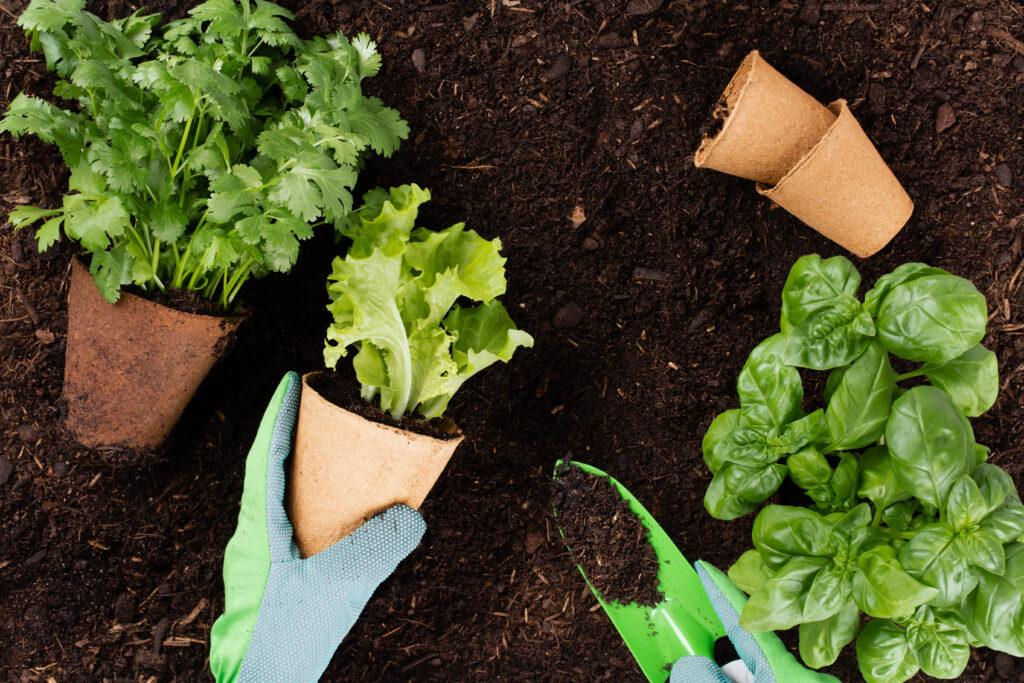
Choosing the right plants for your garden is a personal journey that blends practicality with creativity. This chapter will guide you through the process of selecting plants, considering seasonal factors, personal preferences, and the broader ecological impact. We’ll also compare starting from seeds versus buying young plants and provide insights on fostering plant diversity.
A. Deciding What to Grow
- Understanding Seasonal Cycles: Learn about the growing seasons in your region. We’ll discuss how to select plants based on their suitability for your local climate and the timing of planting for spring, summer, fall, and winter crops.
- Matching Plants to Your Environment: Assess your garden’s conditions – sunlight, soil type, and moisture level. Choose plants that are well-suited to these conditions for optimal growth.
- Personal Preferences and Needs: Consider what you enjoy eating, looking at, and caring for. Whether it’s vegetables for your kitchen, flowers for aesthetics, or herbs for their utility and fragrance, your preferences are key.
B. Starting from Seeds vs. Buying Young Plants
- Starting from Seeds: Understand the advantages, such as a wider variety of choices and lower cost. Learn about starting seeds indoors under controlled conditions and the right time to transplant them outdoors.
- Buying Young Plants: Explore the benefits of purchasing young plants, like a head start on the growing season and reduced initial care. We’ll discuss how to select healthy plants from nurseries or garden centers.
- Tips for Success with Both Methods: Whether starting from seeds or buying plants, we’ll provide key tips for success, such as proper spacing, depth of planting, and initial care requirements.
C. Encouraging Plant Diversity
- Benefits of Diversity: A diverse garden supports a healthier ecosystem, reducing pests and diseases. Diversity also promotes a more resilient garden, able to withstand environmental stresses.
- Companion Planting: Learn about companion planting – growing certain plants together for mutual benefit. This includes pest management, pollination, providing a habitat for beneficial insects, and making the best use of available space.
- Attracting Beneficial Wildlife: Select plants that will attract pollinators, like bees and butterflies, as well as beneficial predators, like ladybugs and birds. This enhances the ecological balance and health of your garden.
- Native Plants: Consider placing native plants in your garden. They’re adapted to local conditions and support native wildlife, requiring less maintenance and offering sustainable benefits.
In this chapter, we dive into the heart of gardening – choosing the plants that will make up your garden. This decision-making process is a blend of understanding your environment, acknowledging your desires, and considering the broader ecological impact. By carefully selecting your plants, you’ll not only enjoy the process of watching them grow but also contribute to a healthier, more vibrant garden ecosystem.
Planting Your Garden – Laying the Foundations for Growth
Planting your garden is a critical step in the journey towards a bountiful harvest. This chapter offers a comprehensive guide to the planting process, covering everything from timing and spacing to watering and feeding your plants. Let’s dive into the details to ensure your garden gets off to the best possible start.
A. Step-by-Step Guide to Planting
- Preparing the Planting Area: Start with preparing your soil. This includes tilling or loosening the soil and incorporating any needed amendments based on your soil test results.
- Planting Techniques for Different Types of Plants: Whether you’re planting seeds, seedlings, or mature plants, each requires a specific technique. We’ll cover the depth of planting, gentle handling of roots, and the importance of not overcrowding your plants.
- Immediate Post-Planting Care: Right after planting, it’s crucial to provide adequate water to help the plants settle in. We’ll also discuss the importance of providing support structures for climbing plants or those that may become top-heavy as they grow.
B. Timing and Spacing Considerations
- Understanding Plant Life Cycles: Different plants have varying growth cycles and times when they thrive. Align your planting with these cycles, considering factors like the last frost date for spring planting and the first frost date for fall planting.
- Spacing for Plant Health: Spacing is crucial for plant health and productivity. We’ll delve into how proper spacing allows for adequate air circulation, sunlight penetration, and growth room, reducing competition for resources and susceptibility to disease.
- Succession Planting: Learn about succession planting – planting new crops as others are harvested – to maximize your garden’s productivity throughout the growing season.
C. Watering and Feeding Your Plants
- Establishing a Watering Routine: Consistent watering, especially in the early stages of growth, is vital. We’ll discuss how to determine the right amount of water based on plant type, weather conditions, and soil type.
- The Role of Fertilizers: Understand when and how to use fertilizers. We’ll cover different types of fertilizers (organic vs. synthetic) and how to choose the right one for your plants.
- Monitoring Plant Health: Learn to read the signs of over or under-watering and nutrient deficiencies. We’ll provide tips on adjusting your care routine to address these issues.
In this chapter, we’ve laid out a clear and detailed roadmap for planting your garden. From preparing the ground to nurturing your newly planted seeds or seedlings, each step is crucial in setting the stage for a healthy and productive garden. By following these guidelines and tuning into the needs of your plants, you’ll be well on your way to reaping the rewards of your gardening efforts.
Ongoing Garden Care – Nurturing Your Garden to Full Bloom
Maintaining a healthy and thriving garden requires ongoing care and attention. In this chapter, we’ll explore the essential aspects of garden maintenance, including routine care practices, natural pest control strategies, and the importance of regular weeding and pruning. These elements are key to ensuring your garden remains vibrant and productive throughout the growing season.
A. Routine Maintenance Tips
- Regular Monitoring: Keep a close check on your plants. Look out for signs of stress, disease, or pest infestation. Early detection is crucial for effective management.
- Soil Care: Regularly check the soil moisture and add organic matter to maintain soil health. Mulching is also essential for moisture retention, temperature control, and weed suppression.
- Water Management: Develop a consistent watering schedule. Adjust your watering based on weather conditions, plant needs, and soil type. Avoid over-watering, which will help prevent root rot and other water-related diseases.
B. Natural Pest Control Methods
- Identifying Common Pests: Learn about common garden pests and their signs. Understanding what you’re dealing with is the first step in effective control.
- Biological Control: Introduce beneficial insects, including ladybugs or lacewings that prey on harmful pests. Encouraging birds and other natural predators can also help control pest populations.
- Organic Pesticides and Repellents: Explore natural and homemade pesticide options, such as neem oil, soap spray, or garlic and chili pepper sprays, which are less harmful to the environment and more beneficial to organisms.
- Preventative Practices: Employ preventative measures like crop rotation, companion planting, and maintaining garden hygiene to reduce pest outbreaks.
C. The Importance of Weeding and Pruning
- Regular Weeding: Weeds will compete with your plants for nutrients, water, and light. Regular weeding is crucial to prevent them from overtaking your garden. Discuss safe and effective weeding techniques.
- Pruning for Health and Productivity: Pruning helps to control plant size, remove diseased or damaged parts, and stimulate growth. We’ll cover pruning techniques for different types of plants and the best times to prune.
- Deadheading Flowers: For flowering plants, removing spent blooms (deadheading) encourages more blooms and extends the flowering period.
In this chapter, we’ve covered the key aspects of ongoing garden care. By implementing these maintenance practices, you’ll not only keep your garden looking beautiful but also ensure it remains healthy and productive. Regular care, from watering and soil management to pest control and pruning, is the backbone of successful gardening. It’s a commitment that requires time and effort, but the rewards – in the form of a lush, flourishing garden – are immeasurable.
Harvesting Your Produce – Reaping the Fruits of Your Labor
The moment of harvest in a garden is a time of great joy and satisfaction. In this chapter, we focus on the crucial aspects of harvesting – identifying the right time to harvest, employing best practices for different types of produce, and methods for storing and preserving your bounty. Let’s look into these issues to guarantee you reap the full benefits of your gardening efforts.
A. Signs That Your Produce is Ready to Harvest
- Vegetables: Learn to recognize the signs of ripeness in various vegetables. For example, tomatoes should be fully colored and firm, zucchinis are best harvested when they are small and tender, and leafy greens should be picked before they start to bolt (flower).
- Fruits: Understand the indicators of ripeness in fruits. Many fruits, like berries and apples, will detach easily from the plant when ripe and often have a noticeable change in color and aroma.
- Herbs: With herbs, the key is to harvest them before they flower for the best flavor. We’ll discuss the visual cues and the optimal time of day for harvesting herbs.
B. Best Practices for Harvesting Different Types of Produce
- Techniques for Gentle Harvesting: Avoid damaging the plant or the produce. Use appropriate tools like garden scissors or pruners for clean cuts. We’ll discuss specific techniques for harvesting root vegetables, leafy greens, fruits, and more.
- Timing Your Harvest: Timing can impact both the quality and quantity of your produce. For many vegetables and fruits, early morning or late evening harvests are ideal.
- Successive Harvesting: For continuous production, learn about successive harvesting, where you harvest what you need, allowing the plant to continue producing.
C. Storing and Preserving Your Harvest
- Immediate Post-Harvest Care: Understand the importance of handling your harvest correctly to maintain freshness. This includes gentle washing (or sometimes not washing until ready to use) and proper drying.
- Storage Techniques: Different produce has different storage requirements. We’ll cover the basics of storing root vegetables, leafy greens, fruits, and herbs to maximize freshness and shelf life.
- Preservation Methods: Explore various preservation methods like canning, freezing, drying, and pickling. Preserving your harvest allows you to enjoy the fruits of your labor throughout the year.
- Utilizing Excess Produce: Creative ideas for using excess produce, including sharing with friends and family, donating to food banks, or even starting a small-scale produce exchange in your community.
In this chapter, we’ve explored the art and science of harvesting – the culmination of your gardening journey. Harvesting at the right time and using the correct methods ensures that you get the best quality and flavor from your produce. Proper storage and preservation extend the life of your harvest, allowing you to savor the taste of summer, even in the colder months. Enjoy this rewarding phase of gardening, as it’s a testament to your dedication and hard work. This process will aid in your daily/weekly/monthly meal planning as well.
Cultivating Growth – Both in Your Garden and Yourself
As we draw this gardening guide to a close, it’s important to reflect on the journey we’ve embarked upon together. From the initial steps of choosing the right location to the joyous moments of harvesting, each chapter has been a step towards not only cultivating a thriving garden but also nurturing personal growth. In this conclusion, we aim to encourage and inspire you to continue this rewarding journey.
A. Starting Small and Embracing Growth
- The Power of Starting Small: Remember, every great garden starts with a single plant. If you’re new to gardening, it’s okay to start with just a few plants or even a single container. Small beginnings often lead to significant, rewarding experiences.
- Expanding Gradually: As you gain confidence and experience, gradually expand your garden. Each season offers new opportunities to try different plants and techniques.
- Learning Through Experience: Embrace both successes and challenges as learning experiences. Gardening is a journey of continuous learning, where every mistake is a stepping stone to greater knowledge and skill.
B. Building a Community of Gardeners
- Sharing Your Journey: We invite you to share your gardening experiences, whether they’re triumphs, challenges, or just everyday moments of joy. Your stories can inspire and encourage others.
- Learning from Others: Engage with the gardening community. Whether it’s through online forums, local gardening clubs, or neighborhood groups, there’s a wealth of knowledge and camaraderie to be found.
- The Ripple Effect of Gardening: Your gardening journey can positively impact others. From sharing your harvest to inspiring others to start their own gardens, your passion for gardening can provide a ripple effect that can extend far beyond your backyard.
C. Looking Forward
As we conclude this guide, remember that gardening is more than just a hobby or a means to produce food. It’s a chance to reconnect with nature, improve your health, and help the environment. Whether your garden is sprawling or compact, every plant you nurture is a testament to your commitment to growth – both in your garden and in yourself.
It is our sincere hope that this guide has provided you with essential knowledge and inspiration to start or continue your gardening journey. Keep exploring, keep growing, and most importantly, enjoy every moment of your gardening adventure.
Join Our Green-Thumbed Community!
As we turn the final page of this comprehensive guide, we invite you to stay connected and continue growing with us. If you’ve found value in our journey through the world of gardening, there’s so much more we have in store for you.
Subscribe for More In-Depth Guides
- Stay Updated: Begin by subscribing to our newsletter to receive the latest in-depth guides, gardening tips, and exclusive content straight to your inbox.
- Upcoming Series Preview: We’re already cultivating a series of specialized guides that delve even deeper into specific aspects of gardening – from organic pest control strategies to advanced hydroponic setups.
- Be the First to Know: Subscribers get early access to our new content, special offers on gardening tools and resources, and invitations to online workshops and webinars.
Join a Community of Garden Enthusiasts
- Share and Learn: By subscribing, you’re not just receiving content; you’re joining a community of like-minded individuals passionate about gardening. Share your experiences, ask questions, and increase your knowledge from your fellow garden enthusiasts.
- Interactive Content: Look forward to interactive content such as Q&A sessions, reader garden showcases, and community challenges that will keep you engaged and inspired.
How to Subscribe
To begin, enter your email below and hit the ‘Subscribe’ button to join our community. We make the promise to respect your inbox – no spam – just valuable, garden-focused content tailored to your interests.
Let’s Grow Together!
Gardening is a journey best shared. Whether you possess a seasoned green thumb or just planting your first seed, there’s always more to learn and discover. Subscribe now and be part of a community that grows together, one plant at a time. Let’s make our world greener, one garden at a time!
We can’t wait to welcome you into our growing family of garden enthusiasts. Happy gardening, and here’s to the many growth-filled seasons ahead!


